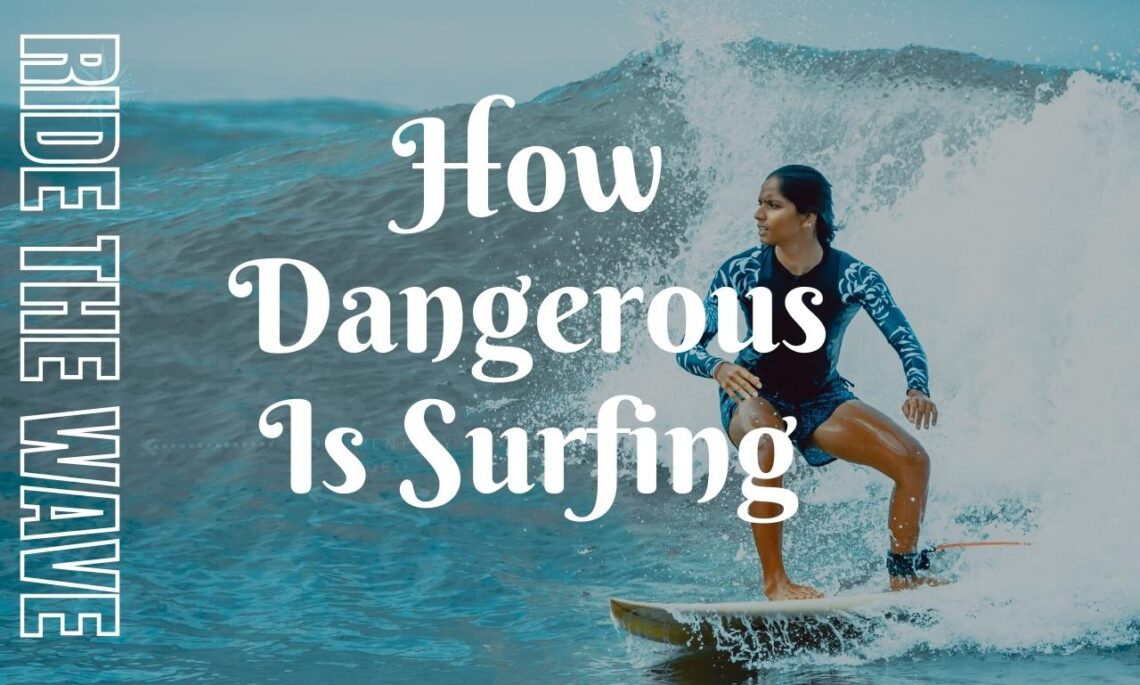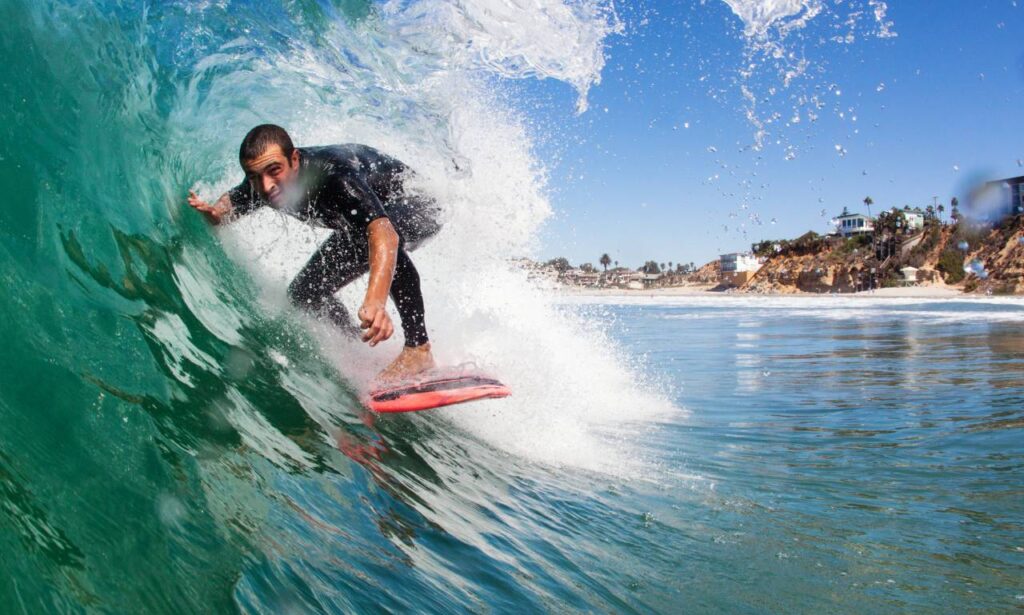
Riding the Waves: How Dangerous Is Surfing?
Introduction
Hey, wave riders! Ever looked at those huge, crashing waves and wondered, “How dangerous is surfing, really?” Well, grab your surfboards, and let’s dive into the facts and myths to discover what’s thrilling and what’s chilling about surfing!
The Thrill of the Ride
Surfing’s like a dance with the waves. You’re gliding, turning, and sometimes even flipping. But don’t be fooled by the fun; there are risks lurking beneath those blue waters.
Waves and Weather
Imagine you’re a tiny ant on a huge leaf floating down a river. That’s sort of what surfing big waves feels like! Here’s the scoop on the dangers:
- Rough Waves: Picture a roller coaster, but made of water. It can be a wild ride, but a tumble can hurt.
- Stormy Weather: Ever tried to keep your balance on a moving bus? That’s a piece of cake compared to surfing in a storm!
Don’t Get Caught in the Rip!
A rip current’s like a super-fast underwater treadmill that pulls you out to sea. Even strong swimmers can struggle with it. How to escape? Swim parallel to the shore, not towards it!
Surfing’s Scary Sidekicks

Surfing’s not just about waves. It’s got some hidden dangers too, like:
- Shark Scares: Just like in the movies, right? Wrong! Shark attacks are rare, but they still make our hearts race.
- Jellyfish Jolts: Imagine stepping on a cactus in the water. Ouch! That’s what a jellyfish sting feels like.
You may like this too: Riding the Wave of Doubt: Is Surfing Dangerous?
How to Stay Safe on the Waves
Don’t hang up your surfboard just yet. Staying safe’s all about being smart, like:
- Taking Lessons: It’s like learning to ride a bike, but wetter. An instructor will teach you the ropes.
- Surfing with Friends: Buddies make everything better, especially if you wipe out.
- Wearing Safety Gear: Helmets and wetsuits aren’t just fashion statements; they’re life-savers.
FAQs – Ask Away!
Is Surfing More Dangerous Than Other Water Sports?
Surfing has its own unique risks, like rip currents and rough waves, but with proper training and safety measures, it can be enjoyed safely. Comparing it to other water sports, the danger level varies depending on the conditions and the surfer’s experience.
What’s the Biggest Danger While Surfing?
One of the most significant dangers is getting caught in a rip current, which can pull surfers out to sea quickly. Understanding how to identify and escape rip currents is crucial for safety.
Can Beginners Surf in Any Conditions?
Nope! Beginners should start with smaller, more manageable waves and gradually work their way up as they gain experience. Surfing in big waves or stormy weather without the necessary skills is a recipe for danger.
What Equipment Can Keep Me Safe While Surfing?
Wearing a suitable wetsuit, helmet, and a leash attached to your surfboard can keep you safe. Using a surfboard with a soft top is also recommended for beginners, as it’s less likely to cause injury if you fall.
Are Shark Attacks a Real Risk When Surfing?
While shark attacks make headlines, they’re incredibly rare, especially if you follow local guidelines and surf in well-known areas. Understanding shark behavior and taking common-sense precautions can further reduce the risk.
What Should I Do If I Get Stung by a Jellyfish While Surfing?
If you’re stung by a jellyfish, get out of the water and rinse the affected area with saltwater (not freshwater!). Removing any tentacles with tweezers and applying a cold pack can help. Seek medical help if the sting is severe or if you have an allergic reaction.
How Can I Learn to Surf Safely?
The best way to learn to surf safely is to take lessons from a professional instructor. They’ll teach you the essential skills, safety protocols, and how to read the ocean conditions. Joining a local surf club or surfing with experienced friends can also provide support and guidance.
How Do I Know If the Weather Is Safe for Surfing?
Weather can significantly impact surfing safety. It’s important to check local weather reports for storms, high winds, or lightning. Many surfers use specialized weather apps or websites that provide detailed surf forecasts, helping them know when it’s safe to hit the waves.
Can I Surf Alone, or Should I Always Have a Buddy?
Surfing alone can be riskier, especially for beginners or in unfamiliar locations. Having a buddy or surfing in a group allows others to keep an eye out for you and provide help if needed. If you do decide to surf alone, make sure someone onshore knows your plans and can check on you.
What Are the Dangers of Surfing During a Red Flag Warning?
A red flag warning at a beach usually indicates serious hazards like strong currents, high surf, or contaminated water. Surfing during a red flag warning is highly discouraged, as it signifies conditions that can be dangerous even for experienced surfers. Always heed local warnings and speak with lifeguards if you’re unsure about the conditions.
Conclusion
So, is surfing dangerous? Well, it’s like baking a cake with a splash of adventure and a pinch of risk. With the right ingredients (like safety, awareness, and a dash of courage), you’ll whip up an experience that’s more exciting than scary. Now go out there and catch some waves, but remember, be wise and ride safe! Surf’s up! 🌊



